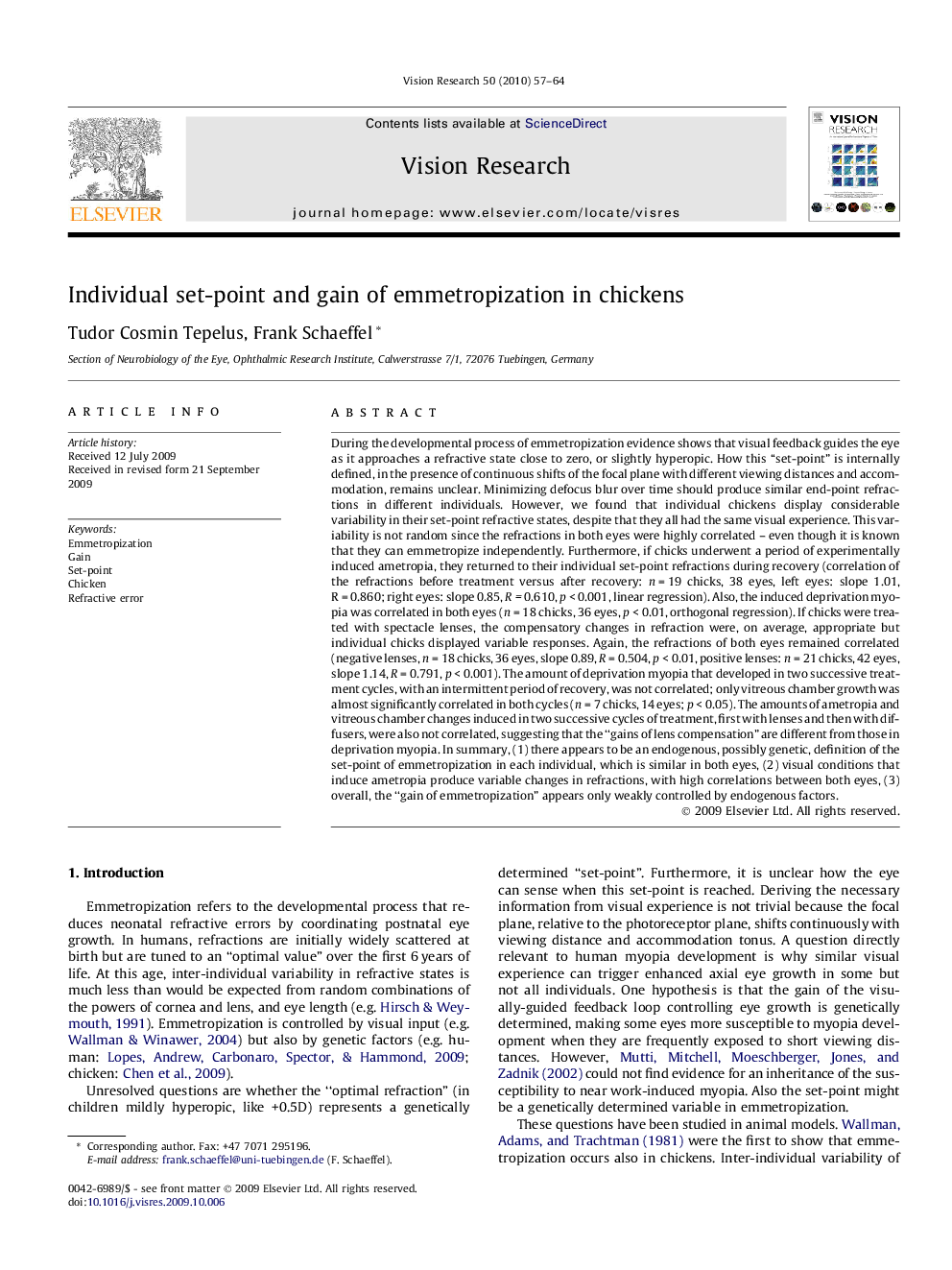| Article ID | Journal | Published Year | Pages | File Type |
|---|---|---|---|---|
| 4034589 | Vision Research | 2010 | 8 Pages |
During the developmental process of emmetropization evidence shows that visual feedback guides the eye as it approaches a refractive state close to zero, or slightly hyperopic. How this “set-point” is internally defined, in the presence of continuous shifts of the focal plane with different viewing distances and accommodation, remains unclear. Minimizing defocus blur over time should produce similar end-point refractions in different individuals. However, we found that individual chickens display considerable variability in their set-point refractive states, despite that they all had the same visual experience. This variability is not random since the refractions in both eyes were highly correlated – even though it is known that they can emmetropize independently. Furthermore, if chicks underwent a period of experimentally induced ametropia, they returned to their individual set-point refractions during recovery (correlation of the refractions before treatment versus after recovery: n = 19 chicks, 38 eyes, left eyes: slope 1.01, R = 0.860; right eyes: slope 0.85, R = 0.610, p < 0.001, linear regression). Also, the induced deprivation myopia was correlated in both eyes (n = 18 chicks, 36 eyes, p < 0.01, orthogonal regression). If chicks were treated with spectacle lenses, the compensatory changes in refraction were, on average, appropriate but individual chicks displayed variable responses. Again, the refractions of both eyes remained correlated (negative lenses, n = 18 chicks, 36 eyes, slope 0.89, R = 0.504, p < 0.01, positive lenses: n = 21 chicks, 42 eyes, slope 1.14, R = 0.791, p < 0.001). The amount of deprivation myopia that developed in two successive treatment cycles, with an intermittent period of recovery, was not correlated; only vitreous chamber growth was almost significantly correlated in both cycles (n = 7 chicks, 14 eyes; p < 0.05). The amounts of ametropia and vitreous chamber changes induced in two successive cycles of treatment, first with lenses and then with diffusers, were also not correlated, suggesting that the “gains of lens compensation” are different from those in deprivation myopia. In summary, (1) there appears to be an endogenous, possibly genetic, definition of the set-point of emmetropization in each individual, which is similar in both eyes, (2) visual conditions that induce ametropia produce variable changes in refractions, with high correlations between both eyes, (3) overall, the “gain of emmetropization” appears only weakly controlled by endogenous factors.
